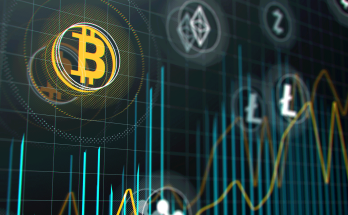The world of finance is undergoing a radical transformation as new technologies and innovations reshape the forex and crypto markets. In this article, we will explore some of the key trends, challenges, and opportunities that lie ahead for both traders and investors in these dynamic sectors.
How artificial intelligence and algorithmic trading are transforming the forex and crypto markets
Artificial intelligence (AI) and algorithmic trading are two of the most powerful forces driving the evolution of the forex and crypto markets. These technologies enable traders to analyze vast amounts of data, identify patterns, and execute trades with unmatched precision and speed. AI and algorithmic trading can also help traders to capitalize on market opportunities, manage risks, and optimize their strategies.
The crypto market, which is relatively young and volatile, is also witnessing a surge in the adoption of AI and algorithmic trading. Crypto traders can use these technologies to exploit arbitrage opportunities, hedge against price movements, and diversify their portfolios. AI and algorithmic trading can also help crypto traders to overcome some of the challenges of the industry, such as security, regulation, and scalability.
Some of the best crypto and forex trading platforms that offer AI and algorithmic trading features are eToro, AvaTrade, BitMEX, and IQ Option. These platforms allow traders to create, test, and deploy their own trading algorithms, or use pre-built ones from other traders. They also provide a range of tools and resources to help traders learn and improve their skills.
The benefits and risks of using cryptocurrencies as a global reserve currency
Cryptocurrencies are digital assets that operate on decentralized networks and use cryptographic techniques to secure transactions and records. They offer several benefits as a potential global reserve currency, such as:
- Cheaper and faster money transfers: Cryptocurrencies can facilitate cross-border payments without intermediaries, reducing transaction costs and delays.
- Decentralized and transparent systems: Cryptocurrencies are not controlled by any central authority, which means they are immune to censorship, manipulation, and corruption. They also have public and verifiable ledgers, which enhance trust and accountability.
- Inflation control and financial inclusion: Cryptocurrencies have limited supply and predictable issuance, which protect them from inflation and devaluation. They also have low barriers to entry and can reach unbanked and underbanked populations, increasing financial access and inclusion.
However, cryptocurrencies also pose significant risks as a global reserve currency, such as:
- Price volatility and speculation: Cryptocurrencies are subject to high price fluctuations and market sentiment, which can affect their stability and reliability as a store of value and medium of exchange.
- Energy consumption and environmental impact: Cryptocurrencies that use proof-of-work consensus mechanisms, such as Bitcoin, consume large amounts of electricity and generate carbon emissions, which can harm the environment and sustainability goals.
- Regulatory uncertainty and legal challenges: Cryptocurrencies face varying degrees of regulation and legal recognition across different jurisdictions, which can create confusion and inconsistency for users and businesses. They also face potential bans, restrictions, and sanctions from governments and regulators, which can limit their adoption and growth.
The impact of regulation and globalization on the forex and crypto industries
Regulation and globalization are two of the most influential factors that shape the forex and crypto industries. They have both positive and negative impacts on the development and performance of these markets.
On the one hand, regulation and globalization can foster innovation, competition, and integration in the forex and crypto industries. They can provide clear and consistent rules and standards, protect consumers and investors, and promote fair and efficient markets. They can also facilitate cross-border cooperation and coordination, enhance market access and liquidity, and create new opportunities and challenges for traders and investors.
On the other hand, regulation and globalization can also pose threats and barriers to the forex and crypto industries. They can create regulatory arbitrage, fragmentation, and divergence, which can increase complexity and uncertainty for market participants. They can also expose traders and investors to geopolitical risks, trade wars, and currency wars, which can affect market stability and volatility.
Some of the most important regulatory and global developments that affect the forex and crypto industries are:
- The Basel III reforms: The Basel III reforms are a set of international banking regulations that aim to strengthen the resilience and risk management of the global financial system. They have implications for the forex market, as they affect the capital requirements, leverage ratios, and liquidity standards of banks and other financial institutions that participate in the market.
- The FATF recommendations: The Financial Action Task Force (FATF) is an intergovernmental body that sets global standards for combating money laundering, terrorist financing, and other illicit activities. The FATF has issued recommendations and guidance for the regulation and supervision of the crypto industry, covering areas such as licensing, registration, customer due diligence, transaction monitoring, and information sharing.
- The CBDC initiatives: Central bank digital currencies (CBDCs) are digital versions of fiat currencies issued and backed by central banks. They are designed to complement or replace existing forms of money and payment systems. Several central banks around the world are exploring or developing CBDCs, such as the People’s Bank of China, the European Central Bank, and the Federal Reserve. CBDCs have the potential to impact the forex and crypto markets, as they can affect the demand and supply of currencies, the transmission of monetary policy, and the competition and innovation in the payment sector.
The best strategies and tools for forex and crypto traders in 2024
Forex and crypto trading are both exciting and rewarding endeavors, but they also require careful planning, preparation, and execution. To succeed in these markets, traders need to adopt the best strategies and tools that suit their goals, risk appetite, and trading style.
Some of the best strategies for forex and crypto traders are:
- Trend following: Trend following is a strategy that involves identifying and following the direction of the dominant market trend, whether it is bullish, bearish, or sideways. Trend followers use technical indicators, such as moving averages, trend lines, and chart patterns, to determine the trend and its strength, and enter and exit trades accordingly.
- Swing trading: Swing trading is a strategy that involves capturing short-term price movements that last from a few days to a few weeks. Swing traders use a combination of technical and fundamental analysis, as well as market sentiment, to identify trading opportunities and signals. Swing traders aim to profit from both rising and falling markets, and often use leverage, stop-losses, and take-profits to enhance their returns and manage their risks.
- Scalping: Scalping is a strategy that involves making frequent and small trades that last from a few seconds to a few minutes. Scalpers use high leverage, low spreads, and fast execution to exploit minor price fluctuations and capture small profits. Scalpers rely on technical analysis, such as price action, support and resistance levels, and candlestick patterns, to identify entry and exit points.
Some of the best tools for forex and crypto traders are:
- Trading platforms: Trading platforms are software applications that allow traders to access and interact with the forex and crypto markets. They provide various features and functions, such as market data, charts, indicators, order types, and risk management tools. Some of the best trading platforms for forex and crypto traders are MetaTrader 4, MetaTrader 5, TradingView, and Coinigy.
- Trading bots: Trading bots are automated programs that execute trades on behalf of traders based on predefined rules and algorithms. They can help traders to save time, reduce human errors, and optimize their strategies. Some of the best trading bots for forex and crypto traders are 3Commas, Cryptohopper, HaasOnline, and Zignaly.
- Trading signals: Trading signals are recommendations or alerts that provide information and guidance on when to buy or sell a certain asset or pair. They can be generated by human experts or by automated systems, and can be based on technical, fundamental, or sentimental analysis. Some of the best trading signal providers for forex and crypto traders are FX Leaders, DailyFX, CryptoSignals, and Crypto Quality Signals.
Conclusion
The forex and crypto markets are two of the most exciting and lucrative sectors in the financial world, offering traders and investors a wide range of opportunities and challenges. In 2024, both markets are expected to witness significant developments, trends, and innovations, which will shape their future direction and performance. By using the best strategies and tools, traders and investors can maximize their profits and potential in the year ahead.




